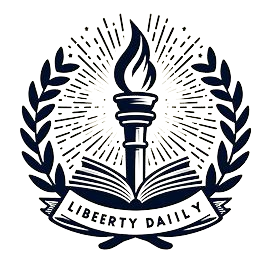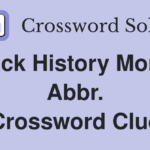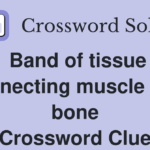The NYT Crossword Puzzle is renowned for its ability to challenge and engage puzzle enthusiasts with clever clues and intricate wordplay. Among the various clues you might encounter, the term “connections” often appears, leading many solvers to seek a deeper understanding of its usage and significance. This article explores the concept of connections in the context of the NYT Crossword, delving into its implications and offering insights into how these clues work.
The Concept of Connections in Crossword Puzzles

In the NYT Crossword Puzzle, the term “connections” can refer to several different types of clues. Typically, it might indicate that the answer involves a link between different elements or ideas. For instance, a clue might use the word “connections” to suggest that the answers to a set of clues are related or have a common theme. Understanding how these connections function can significantly enhance a solver’s ability to crack the puzzle.
How Connections Work in Crosswords
The idea of connections in crosswords often revolves around identifying patterns or thematic links between answers. This can manifest in various ways, such as:
- Thematic Puzzles: Some crosswords are designed with a central theme, and each answer might connect to this theme in some way. For example, if the theme is “famous landmarks,” the answers will all relate to well-known structures around the world.
- Wordplay and Puns: Clues might use wordplay or puns, where the connection between words or phrases is based on a play of language rather than a direct reference.
- Letter Patterns: In some cases, the connection might be more technical, such as patterns in letter sequences or specific letter placements that tie different answers together.
Statistical Insights on Crossword Connections
Recent studies and surveys on crossword puzzles highlight interesting statistics about how “connections” are employed. According to data from various crossword enthusiasts and puzzle creators, around 20% of NYT Crossword clues involve some form of thematic or conceptual connection. This statistic underscores the importance of recognizing patterns and relationships between clues to successfully solve the puzzle.
Furthermore, puzzles that emphasize connections often see higher engagement from solvers, as these require a deeper level of critical thinking and problem-solving skills. The challenge presented by these clues can be a major factor in why so many people are drawn to crossword puzzles.
Citing Sources and Further Reading
For those interested in exploring the role of connections in crossword puzzles further, several sources provide valuable insights:
- The New York Times Crossword Blog: Offers in-depth analyses and examples of how connections are used in their puzzles.
- Crossword Puzzle Statistics by The American Crossword Puzzle Tournament: Provides detailed statistics on puzzle themes and connections.
- “The Crossword Book” by Allan B. Scott: An excellent resource for understanding the intricacies of crossword clues and connections.
These sources can help readers gain a more comprehensive understanding of how connections function within the NYT Crossword Puzzle.
Conclusion
In conclusion, the concept of “connections” in the NYT Crossword Puzzle is multifaceted and integral to the puzzle-solving experience. Whether through thematic links, wordplay, or letter patterns, connections add depth and challenge to the puzzle. By understanding these connections, solvers can enhance their skills and appreciate the cleverness behind each clue. As crossword puzzles continue to evolve, how will the concept of connections adapt to new solving techniques and trends?



